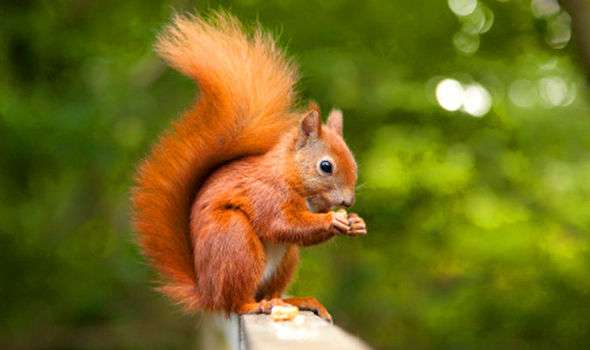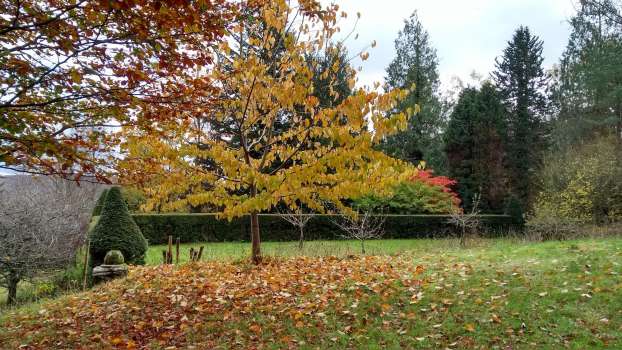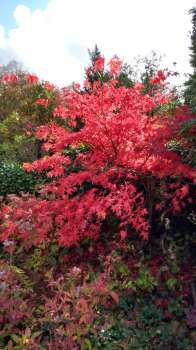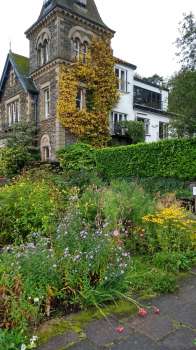‘Squirrels are bastards’. Those are the surprising words at the start of Alys Fowler’s gardening article in this week’s Guardian Weekend magazine. She was upset with them because they were gnawing into her unripe walnuts without eating them as it wasn’t to their liking. But although she couldn’t enjoy the nuts she suggested another use from the fruit of the walnut which is to make a dye. I always learn something from Alys’s articles.
We have a dwarf walnut tree that was planted on my 60th and it is coming up to ten years old now but still, sadly, no fruit. When it does fruit I shall have to try Alys’s tip of using walnut husk to dye all my old white T shirts. Barring walnut husk dye, when it comes to grey squirrels I find few redeeming qualities and would be glad to hear of any from readers. I know, they are part of the food chain for predators and they do plant the odd tree here and there when forgetting where they stashed their bounty. Anything else?
I would modify Alys’s comment slightly by saying it is the grey squirrel that is at issue. She lives in Birmingham where squirrels, I would imagine, are always grey but up here in the Lakes we also have the red squirrel, our increasingly rare and very cute native squirrel which we do our best to provide suitable habitat for at Yewfield. But the greys are moving in at pace and walnuts or no walnuts they are a menace. I recently attended a webinar hosted by the Royal Forestry Society and one forester complained that he has all but given up growing broadleaved leaves because of grey squirrels. His ten year old trees were growing beautifully then one day he went out to have a look and many had their bark stripped. The blighters are going for the sweet sap in the phloem of the tree under the thin bark of the young trees. We have planted around 6000 native broadleaves at Yewfield and it would break my heart to see that happen to them. On top of young tree damage they pass on the pox virus to our native red squirrel which doesn’t resistance to it. They also breed more prolifically, pushing the reds into less productive food areas. Next year I expect we will see an explosion of greys because this autumn is an oak mast year with acorns dropping from trees in their thousands. Grey squirrels can digest the tannins in the acorns but the reds can’t. Trapping and relocating them would only give someone else the problem. Yet another ‘conservation dilemma’ when caring for land at a vegetarian guest house.

Until yesterday the autumn colours have been superb. With the dry spring weather helping to increase the carotene pigments in the leaves that produce oranges and yellows along with cold windless days last week unmasking the anthocyanin pigment that reveal the reds in the leaves of Japanese maples, we were treated to a startling kaleidoscope. The colourful leaf procession in the garden began with the Katsura tree Cercidiphyllum japonicum with its orange heart shaped leaves and burnt toffy scent followed by the brilliant yellow leaves of the Chinese birch Betula ermanii and the peachy pink of the handkerchief tree Davidia involucrata then a variety of brilliant red Japanese maples especially Acer palmatum ‘Osakasuki’. This week we are still enjoying the shrimp colour of the Dawn Redwood Metasequoia glyptostroboides and the orange and yellows of beech trees. But over the last couple of days strong winds and heavy showers have scattered the leaves hither and thither. The softer plums and russets of the oaks and bracken in the wider landscape are still to come and hopefully we shall have some dry quiet weather to enjoy them before they are stripped bare in autumn gales for their five month winter sleep.


Asters, rudbeckias, Schizanthus and dahlias still give us joy in the patio garden. Last week we received a shipment of bulbs from Peter Nyssen. Among the usual Alliums, Muscari, and dwarf daffodils, I am going to blitz the patio this year with a 100 bright red Apeldoorn tulips. I will plant them deep, spray them with garlic spray and hope squirrels and mice leave them alone.

Go back to all blog posts or read the next entry in our blog here →
You can also read the previous blog post here.
